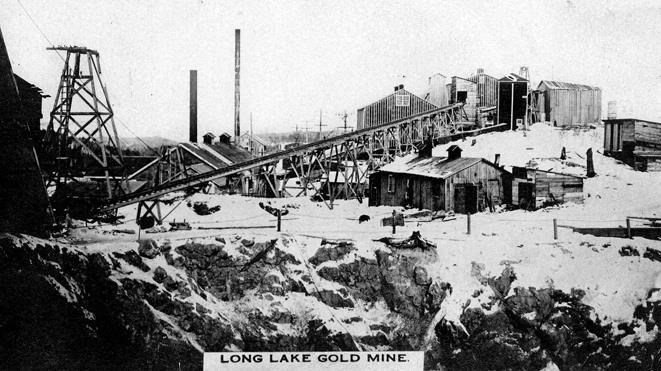The Long Lake Stewardship Committee says it is pleased with plans to rehabilitate the lake despite some setbacks and delays.
Stephen Butcher, the stewardship committee's chair, said the Ministry of Northern Development and Mines and its partners had initially planned to begin rehabilitation work in 2016, but that has been pushed back to 2018.
The ministry says it expects the work to be completed by 2020.
In 2011 the stewardship committee tested the south-west end of the lake, where it discovered high arsenic levels.
The Ministry of the Environment later found arsenic concentrations in the south end of Long Lake exceeded the Ontario Drinking Water Standard of 25 micrograms per litre.
In the fall of 2012, the Sudbury and District Health Unit issued a drinking water advisory to property owners located in the affected area of the lake. They identified arsenic as a contaminant of concern.
The main source of arsenic contamination was the historic Long Lake Gold Mine, which operated intermittently from 1909 to 1939 and milled approximately 196,000 tonnes of ore and produced around 1.7 million grams of gold.
“Runoff from tailings from the old mine site discharges into Luke Creek and Long Lake,” said Ministry of Northern Development and Mines spokesperson Phil Andrews in an email to Sudbury.com. “As well, erosion has deposited quantities of tailings into both bodies of water. This has resulted in elevated arsenic levels in water samples, above provincial water quality objectives and the Ontario Drinking Water Standards.”
Engineering firm SNC Lavalin has taken the lead on the rehabilitation project, and is completing a detailed engineering plan to remediate the site.
Tailings identified for relocation will be removed by excavation or dredging, said Andrews.
The excavation area within Long Lake will be controlled through the use of barriers such as silt curtains. Drainage from dredged or excavated material will be treated before being discharged to the environment. Material will then be transferred to the new containment area for disposal.
SNC Lavalin and the ministry hosted a community meeting at the Sudbury Holiday Inn Thursday evening, where representatives provided updates on the project's progress.
Butcher said there was so much community interest in the meeting it was standing room only.
The ministry said it expects contract tendering, and the awarding of contracts for the rehabilitation to unfold between December 2016 and December 2017.
Options for maintaining the proposed tailings impound site and to treat water collected during tailings collection are aspects that continue to be reviewed.
Remediation options for the wetland area near the lake is still under review.
